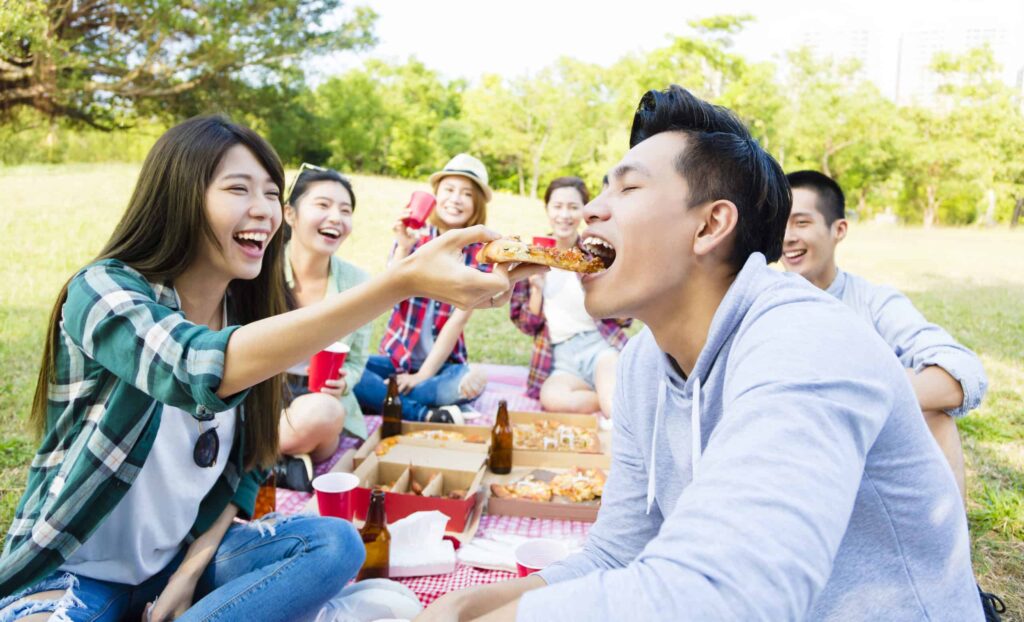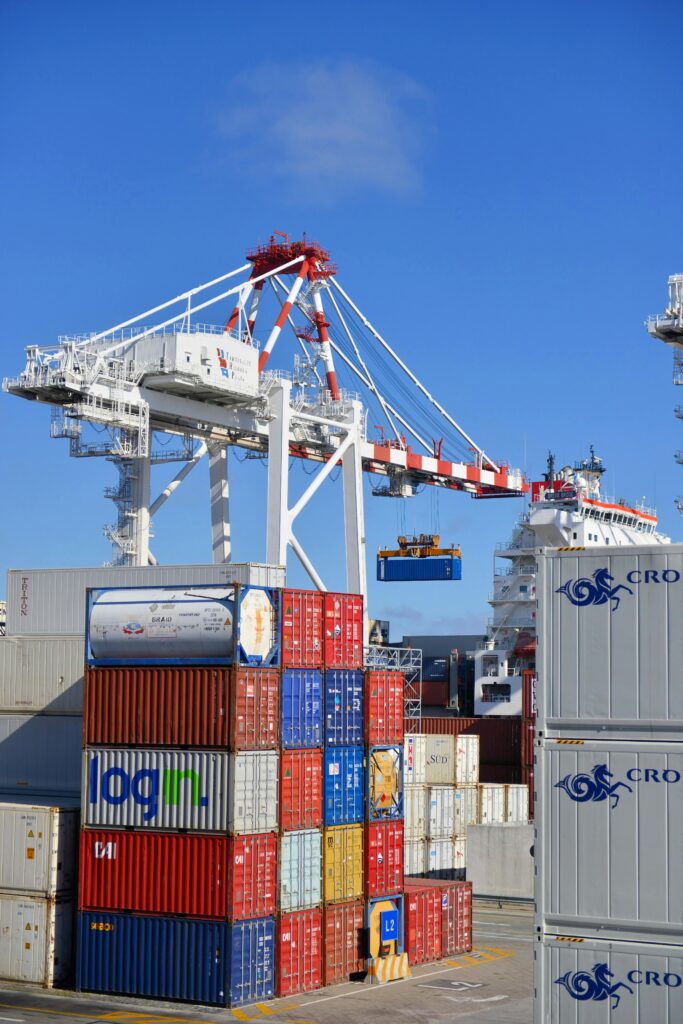The ubiquity of smartphones has transformed many industries and continues to enable innovative business models and use cases across the globe. These apps have moved beyond early adoption to everyday use, creating expectations for seamless execution of on-demand services in every industry. The Quick Service Restaurant (QSR) sector is no different. In response, leaders are developing new ways to merge the digital with the physical to provide continuous yet non-disruptive engagement that improves the overall customer experience.
For QSRs, digital “order from anywhere” options are at the center of this trend. Yet in order to deliver on the full potential of these new “order from anywhere” capabilities, restaurants must avoid the pitfall of poor communication and lack of flexibility during the order fulfillment phase. Otherwise, they’ll be facing the wrath of hangry customers. Delivery journeys that facilitate easier order handoff can be accomplished by creatively leveraging location-powered experiences – in a variety of ways.
There’s no turning back now
As expected and unexpected competition changes customer habits, traditional restaurants are being forced to reimagine how they take orders and deliver food. Twenty-six percent of Panera’s orders are now digital, they are hiring 10,000 new delivery people and have reached over $1.2 billion in digital sales.1 Denny’s is entering the food delivery business and creating unique packaging to ensure the highest food quality.2 Starbucks’ order and pay app accounted for 10 percent of transactions for US-based Starbucks stores in Q4 of 2017.3 Chipotle’s mobile orders are up 50 percent year-over-year, and 8.6 percent of sales are digital, on average.4 In addition to established chains reengineering, a significant number of delivery-only businesses have popped up over the years such as GrubHub, Postmates and UberEats, which focus exclusively on the delivery segment of the value chain.
These new services not only make getting a meal easier for users, but they present significant benefits for restauranteurs as well.
With innovation comes complexity — get comfortable with the complexity
New digital ordering options empower customers with greater flexibility around how they can place their order, where they can receive it and where they can consume their meal. Restaurant operations must become dynamic in response. Consumers can easily order food at the office, at home or on the go using mobile apps. They can order their food on the way home to have it delivered as they arrive, or order lunch from the office conference line to be delivered in the park for a bit of fresh air. Food delivery services add an extra layer of complexity – more choices. Their customers can order dishes from a variety of different providers from a single app. The growth of on-demand service is changing how consumers think about what is possible and entrepreneurs are making it happen. It’s no longer about delivering a pizza from point A to point B. Now, there are a lot more options and entities that enter into the equation. To remain competitive, proprietors of all classes of restaurants need to be ready and aware of the innovations that are emerging from the Fortune 500 chains to the mom and pop greasy spoons.
While there are lots of opportunities as processes change, there are also lots of risks. Some of the biggest challenges QSR’s face is to maintain food quality and timely delivery. In other words, consumers just won’t tolerate waiting around without knowing where there order is and when it will arrive. And they most certainty don’t care to hear about how hard it is to prevent a soggy bun or lukewarm fries. That dine-in quality experience is non-negotiable, no matter that they won’t actually be dining at the restaurant. The key is to efficiently connect diners with food at their convenience.
Reasons to be hangry:
- Customers not knowing where the food is
In the age of digital ordering and omni-channel experiences, the traditional food delivery process is outdated. Consumers don’t want to be tied to a specific location waiting to take delivery of their order. They may put off tasks such as taking a shower or walking the dog in fear that they may miss the delivery. In our
world of instant gratification, not knowing where your food order is and when it will arrive causes anxiety, especially when you are hungry and cranky. Not only is this anxiety a detractor from overall customer satisfaction, but it can lead to increased customer service calls to check on order status. Ensuring that deliveries end up with the right customer is also crucial. Missed deliveries result
in a poor experience, wasted food and lost revenue.
- Restaurants not knowing where the customer is
Digital ordering and mobile apps have enabled order ahead services where patrons can order food on an app or website and pick it up at the restaurant. Ideally, customers wouldn’t have to wait in line, in the parking lot or in the waiting area to pick up their order. It should be ready and waiting for them when they arrive. But not ready too soon.
This frictionless vision has not always been executed effectively as it can be overwhelming for some restaurants to take on the daunting initiative of perfectly timed take-out – or click and collect as they say in the UK. When orders aren’t ready at the right moment, the presence of waiting customers can also block restaurant entrances and discourage walk-in business. To help solve the problem, some managers have established separate areas to fill digital orders or reverted to texting diners when their order is ready. These solutions still require users to wait – they’re just waiting elsewhere. The other option is to prepare meals well ahead of time to ensure they’re always ready when the customer arrives. This approach can lead to cold food, which isn’t going to help anyone properly overcome their hanger.
How multidimensional location sharing can help
As with any operation, data is a critical tool for reducing risk and capturing opportunities. Real-time location data that tracks and creates shared experience around food orders in transit, as well as customers on the move, increases the probability of a better experience. Most modern digital ordering apps feature order tracking information that help set customer expectations in real-time. This capability is becoming a must-have for QSR delivery operations. These apps track the delivery person, plot them on a map and provide an ETA. By providing users with a precise and real-time delivery time, customer stress is reduced and they get control back of their purchase because they aren’t tied down while waiting for their meal to arrive.
While users’ insight into the location of their delivery person is very valuable, the restaurant’s knowledge of where their customer is can also be equally helpful. In the call-ahead scenario, restaurants can prioritize orders not only by when they are placed but by how far away the customer is from the establishment. By coordinating order-ready times with customer arrival time, customers no longer have to eat cold food that has been sitting around or wait for their order to be ready. Doing that successfully starts with location insight. Does the customer care that orders are filled in the order they were received? No, they just want good food and they don’t want to wait. Even with delivery, drivers knowing a customer’s location can limit the number of missed orders. If plans change or a customer is at a hard-to-find location, the customer can share their current location to help delivery people find them.
Whether a delivery or a pickup, consumers knowing where their food is and restaurants knowing where customers are (and their ETA) in real-time makes it easy for consumers to choose to come back again and again.
Putting next generation dining experiences within reach
Two-way location data sharing can also enable new business cases or dining scenarios. For example, location information on a “heat map” of customers can help food truck operators find high-density selling areas. If enough patrons broadcast their location, food trucks can move to a better spot to serve hungry patrons.
Real-time customer location can also enable order-ahead-eating scenarios. Customers might place their order on the way to a restaurant and simply walk in, sit down and be served. Customer location data would alert servers that the customer is in the restaurant, seated and ready to consume their meal.
Glympse for food delivery and curbside pickup
Glympse’s powerful platform offers location sharing as a service, including APIs and SDKs that enable app developers to integrate location sharing into their mobile ordering. Location data can also be integrated into restaurant operations software. Most importantly, features control and limit the length of time a location is shared, maintaining the user’s privacy. Glympse also provides a custom branded web-based map, route-view and ETA that consumers can access through any web browser. Notifications via SMS and email drive users to the web experience, so they know exactly when to check back for the latest update on the status of their order.


